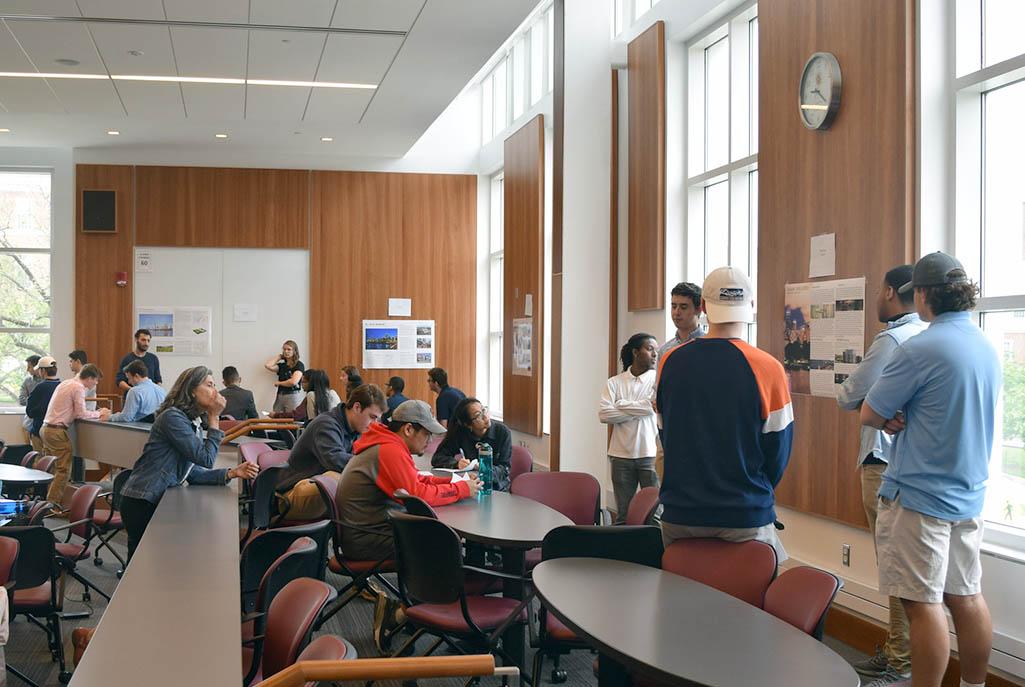Don’t like final exams? Don’t like final exams at 8 a.m.?
Luckily for you, there’s Professor Heidi Bulich’s course: “People, Planet, and Profit: Building Sustainable Places” which, instead of an exam, gave students the opportunity to demonstrate their mastery of course material by participating in a mock National League of Cities competition.
Groups of students represented St. Louis, Newark, Detroit, New Orleans, Birmingham, Ala., Oklahoma City, Houston and Charleston, S.C.—all cities that have recently experienced challenges, like economic downturn or environmental disaster, but are undergoing revitalization and are actively trying to draw investors. Students presented posters to their fellow classmates that covered the issues of sustainability, resilience, innovative planning techniques and affordable housing to attract Generation Z and Millennial investment and businesses.
In Houston, for example, students explained how the city is working to prevent more flooding from storms like Hurricane Harvey, which devastated the city in 2017. In Newark and Detroit, former glowing symbols of American industry and prosperity, students discussed how the cities are revitalizing while trying to mitigate the negative effects of gentrification. In Charleston, a uniquely historic city with a booming tourist industry, groups explained how the city plans to address rising sea levels, and how it will tackle affordable housing with a large wealth gap.
The presentations last week were the culmination of semester-long group activities Bulich developed with two of her teaching assistants—Peter Heon (B.ARCH ’19) and Michael Wolok (Mechanical Engineering ’19)—related to four course topics. The 80-person class, a general education “Scholarship in Practice” course, included students from a variety of different majors and areas of study who rarely work in creative settings.
“I took a lot of art classes, as well as design work for architecture,” Heon said. “So, I get to exercise that ability a lot, and I guess my main goal was to try and get other students—who might be economics majors taking this class—to really work on that part of their brain. I think people generally enjoy the ability to do these sorts of activities when, you know, normally they're just crunching numbers.”
Throughout the semester, each student also develops a six-part sustainable plan for a special public place that fosters placemaking and builds community. Students incorporate ideas from class, suggestions from peer reviews and observations from fieldwork into a blog that includes reflections, photos and videos that pitch their ideas to public officials.
“I haven't experienced a class that's… this sociable or interactive, and you have freshman taking it and then you have seniors taking it,” said Wolok. “It’s just a really good mix of a lot of different thoughts and majors.”
You can view more images from the event here.

